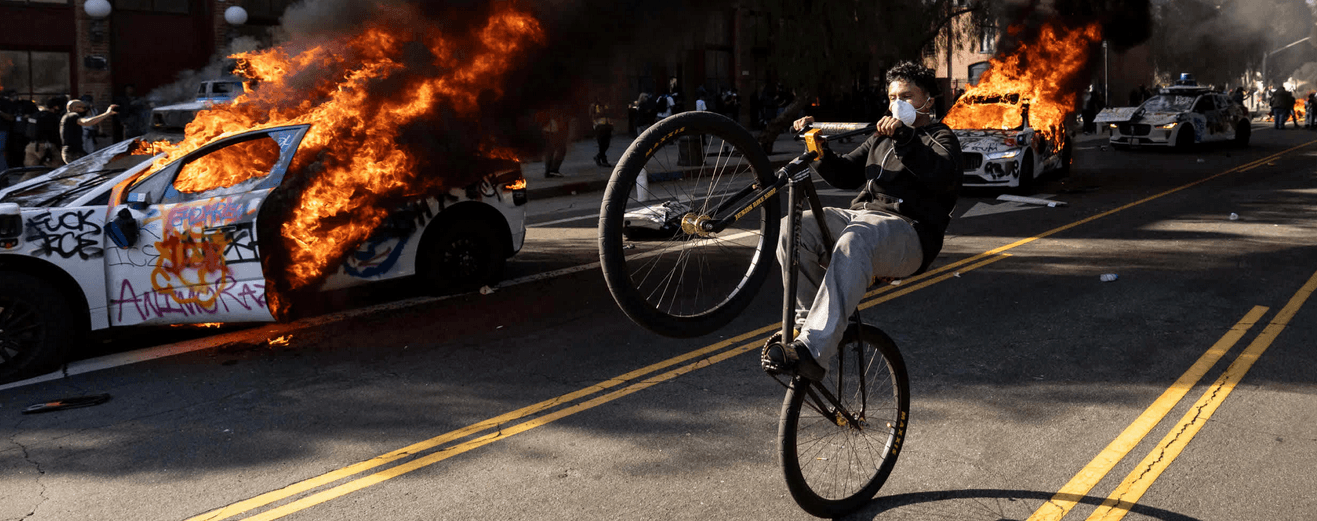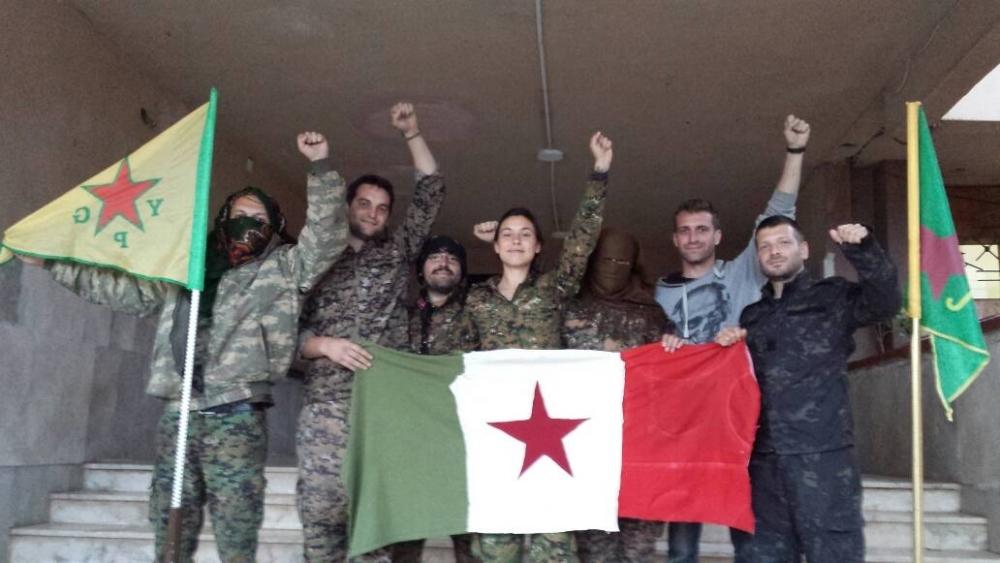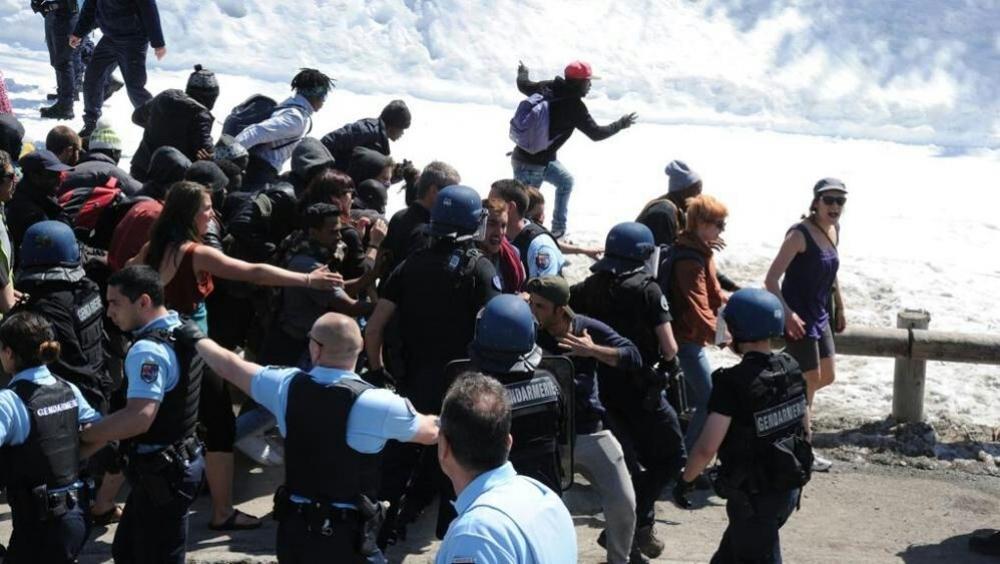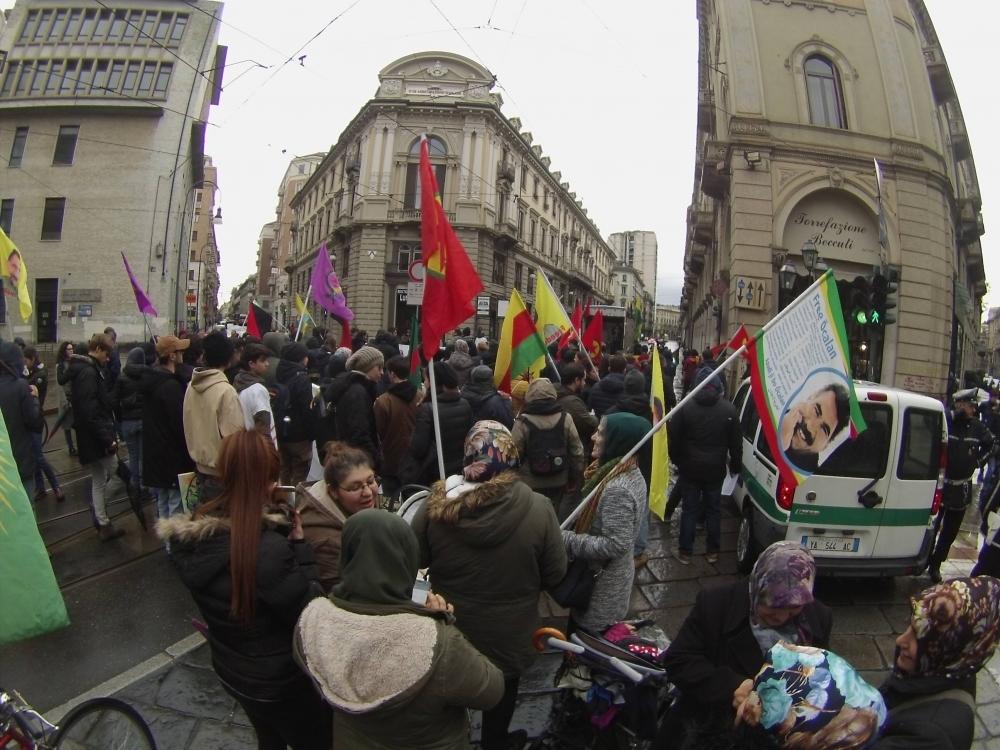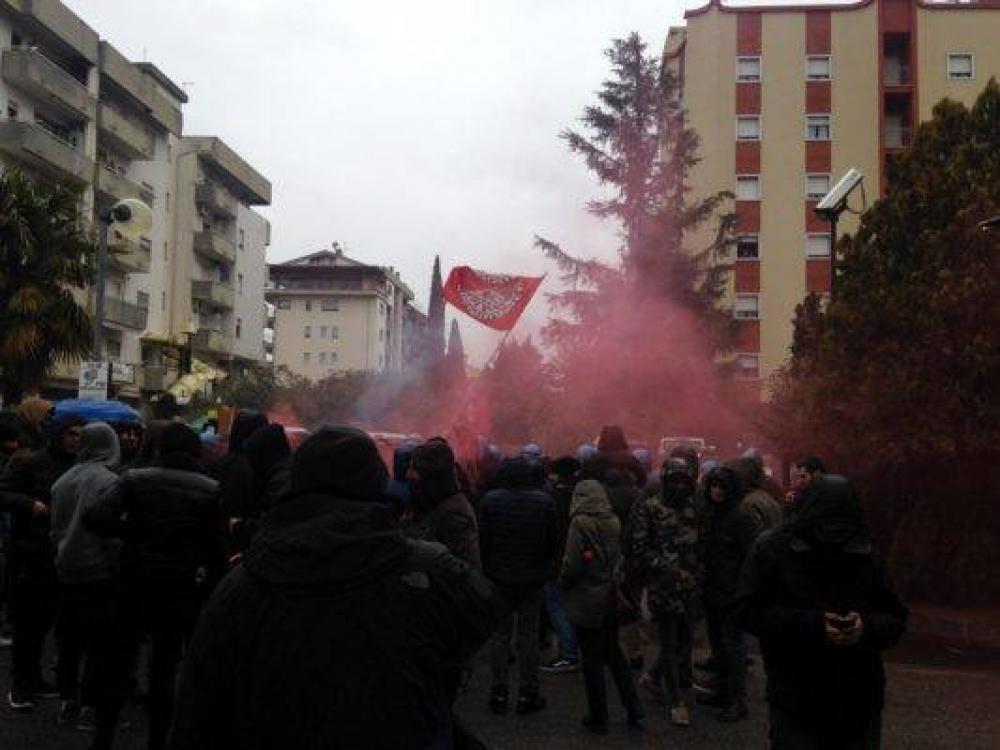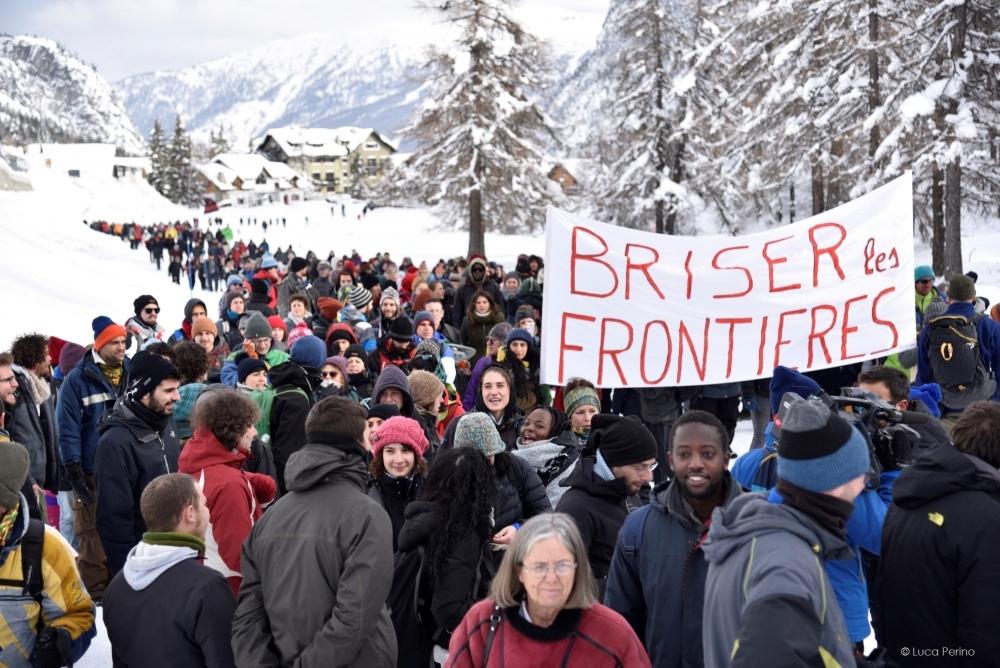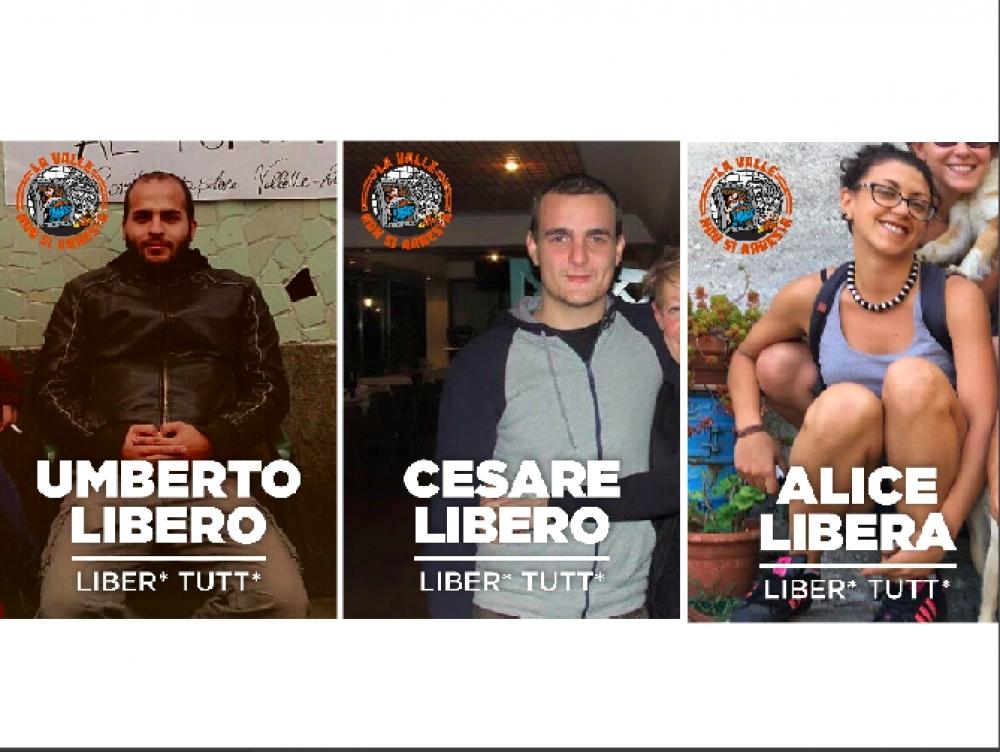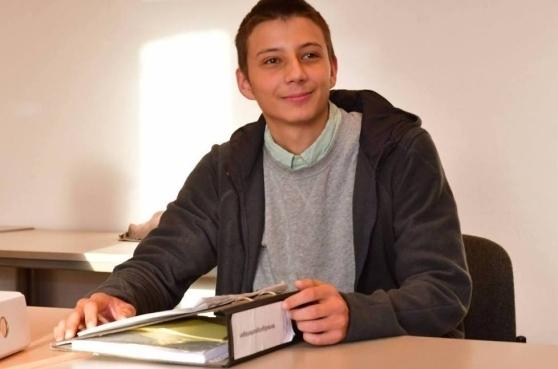#Italy #14N: The Rage is Growing
The date of November 14th gives us some important elements which we must analyse with care because they can tell us about today’s Italy of conflict. In two days time, on November 16th, the south of our country will face another mobilisation against the crisis. There is, in fact, a complete separation between the trade unions and the effective practice of the general strike. Anyone working in industries in which the the CGIL [*] is present, knows the extent to which trade union officials were eager to minimize the significance of this day among workers.The outcome, in many cases, as far as real absence from work and attendance of union marches was concerned, was evident. Italy was not shut down as Spain was, and, as a result, young students and precarious workers (who in many cases don’t have the safeguards that trade union members have) were required to play a pivotal role to boost the level of the day up to that seen in other European dimensions.
The trade unions spent years and years methodically sabotaging the practice of striking as a tool of re-appropriation, refusal of work and struggle, by repeatedly imposing strikes of two, four or even one hour’s time. In this way the unions have worked to lessen the impact of striking as a tool of social agitation, turning it into a mere tool of statistical “representation” of an industrial dispute, thus reducing it to what is exactly the opposite of the strike – the vote. The ritual strikes of the last years have been misunderstood forms of a controlled expression of dissent towards government policies, always with a negotiating table in mind for the trade unions to sit around, and certainly not stronger for having brought some thousands of workers and loyal pensioners into the squares, but rather for being able to participate in peer meetings between rusted on members of the casta[**]. Because the casta, of course, desperately needs a state trade union to mediate conflicts and, above all, the state needs a sham strike to delude the atomized masses about the extent of their weight in political processes, in a way this is completely analogous to what happens when they vote.
The social composition of students and precarious workers concretely and practically opposes this tendency of the unions by neither passively participating in the #14N strike nor by trying to strictly hegemonise it. This social composition literally built it – it constituted the strike itself, in every way. It built it by not only being able to express itself with more than ten thousand people participating in each big city, but also by being able, for many hours, to wrest control of significant portions of urban areas from the dominant apparatus and its parasitical institutional appendages by means of collective re-appropriation and direct action.
First of all, in Rome – a city where (as we know very well) for many years there has been a taboo about challenging the Roman police department – students imposed their own choices in the streets with determination, as they also did on October 5th. On one hand, they acted on a concrete level: thousands of young people were seen protesting and resisting police charges on Lungotevere, the Tevere promenade; on the other hand, on a symbolic level – which is is a significant consideration to be taken into account-, the practices of political conflict produced effects that resulted in Rome’s name immediately showing up in foreign countries and international media, together with Milan’s name, another city where students imposed sanctions on banks and private universities, and challenged the police’s attempts to block access to the neighbourhood of Porta Genova.
Also, in Turin, the social strike entirely outclassed the CGIL’s march, the latter being numerically smaller as compared to the students and precarious workers’ demonstration. Abstension from work and school was an opportunity to move around the city occupying and damaging the seats of financial and political institutions and ministerial offices, eventually ending in the new re-appropriation of a housing space for university students and scholarship holders: the Verdi 3.0 building. The police prooved themselves completely unable to handle the situation, which spread through the entire city of Turin and also the nearby Susa Valley, where the “No Tav” movement, opposing soil drilling in the valley, occupied highways and local roads last night, and are still fighting police at the time of writing (night of the 14th of November).
In Naples, a city which had experienced a strong anger against the ministers of Monti’s goverment just the previous day, the railway station was occupied, as was also the case in Palermo. In Bologna, Genoa, Catania, Pisa, Modena and Bergamo strikes by the cities’ transport workers paralysed public transport systems and demonstrated the centrality of the social anger against the crisis. This succeeded in transforming an empty masquerade; a made-up strike politically ‘militarized’ by the CGIL into a soul-enlighting device, into an act that gave space back to the people and attacked institutional buildings (even in those cases in which the institutional power is represented by the trade unions themselves, as in Bologna, where the CISL[***] offices were occupied). The strike became a device that is able to resist repressive mechanisms. Violent mechanisms indeed, but, at the same time, mechanisms that are experiencing moments of crisis: in Turin, the provincial administration building was invaded and plundered by hundreds of people, with police unable to maintain a presence after already being forced to retreat twice before; and in Rome and Brescia where the riot police gave in to the usual unmotivated provocations as they coldly charged protesters and commited unprovoked acts of violence on those arrested.
The essential fact which emerges from the Italian #14N can be summarised as follows: after many years of complete passivity on the part of the masses, as well as a tireless political oppression of social forces, something is moving. In just one day we stormed our towns, each by our own means and within the limits of the possibilities given by the respective contexts, but we did achieve some important results. This was possible because we know that we are the many, and in many different places at the same time, and everybody in the streets knew that young, precarious Italy, where ever it finds itself, struggles and does not take part in strolling parades. We know that in Italy the wind is slowly changing, too slowly, perhaps, but it is changing nevertheless. And all together we managed to defeat the dishonest staged celebrations of the trade union burocracy. With our presence in the streets, we conquered the political stage far beyond the stage-managed moments that catch the interest of the newspapers and TV stations. A triumph? No! Just a tiny step towards the transformation we have to affect, useful only because another thousand steps are waiting to be taken.
Infoaut
[*] The main Italian trade union, historically close to the Communist Party and now with its centre-left successors. The main body of CGIL itself, as the other unions addressed to in the document, is to be thought of as a bureaucratic, hierachical trade union, ready to work with state and capitalist institutions – thus very different from forms of rank-and-file unionism closer to various areas of the Italian autonomous movement.
[**] “The ruling caste”: a popular catch-phrase in Italy, referring to the upper echelons of political parties and extensively to state, judicial and industrial institutions.
[***] Another italian trade union, historically close to the left of the Christian Democracy Party, now strong in the pensioners’ union; as far as the workers are concerned, they distinguished themself by being compliant to the employers’ requests.
Ti è piaciuto questo articolo? Infoaut è un network indipendente che si basa sul lavoro volontario e militante di molte persone. Puoi darci una mano diffondendo i nostri articoli, approfondimenti e reportage ad un pubblico il più vasto possibile e supportarci iscrivendoti al nostro canale telegram, o seguendo le nostre pagine social di facebook, instagram e youtube.



